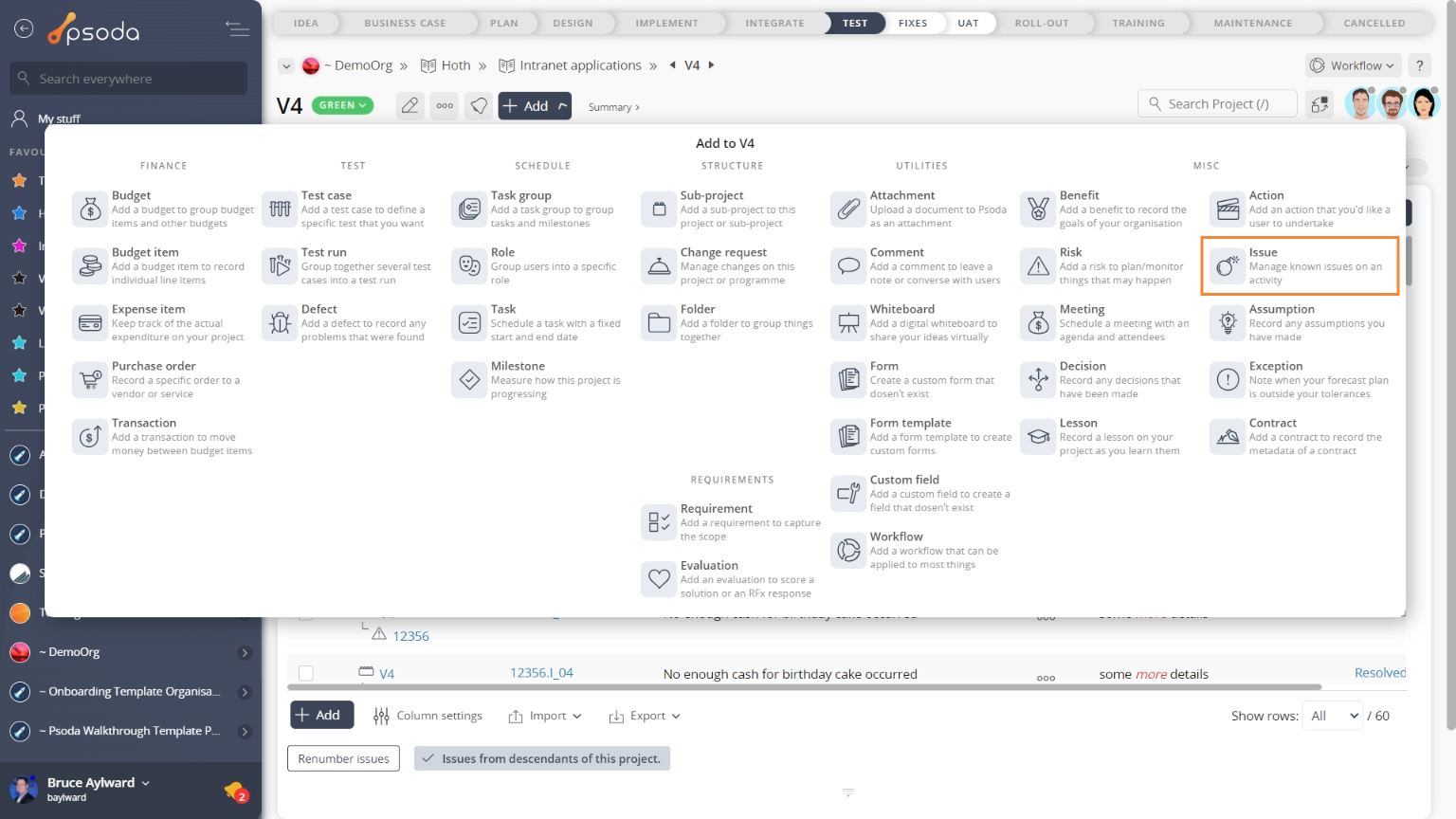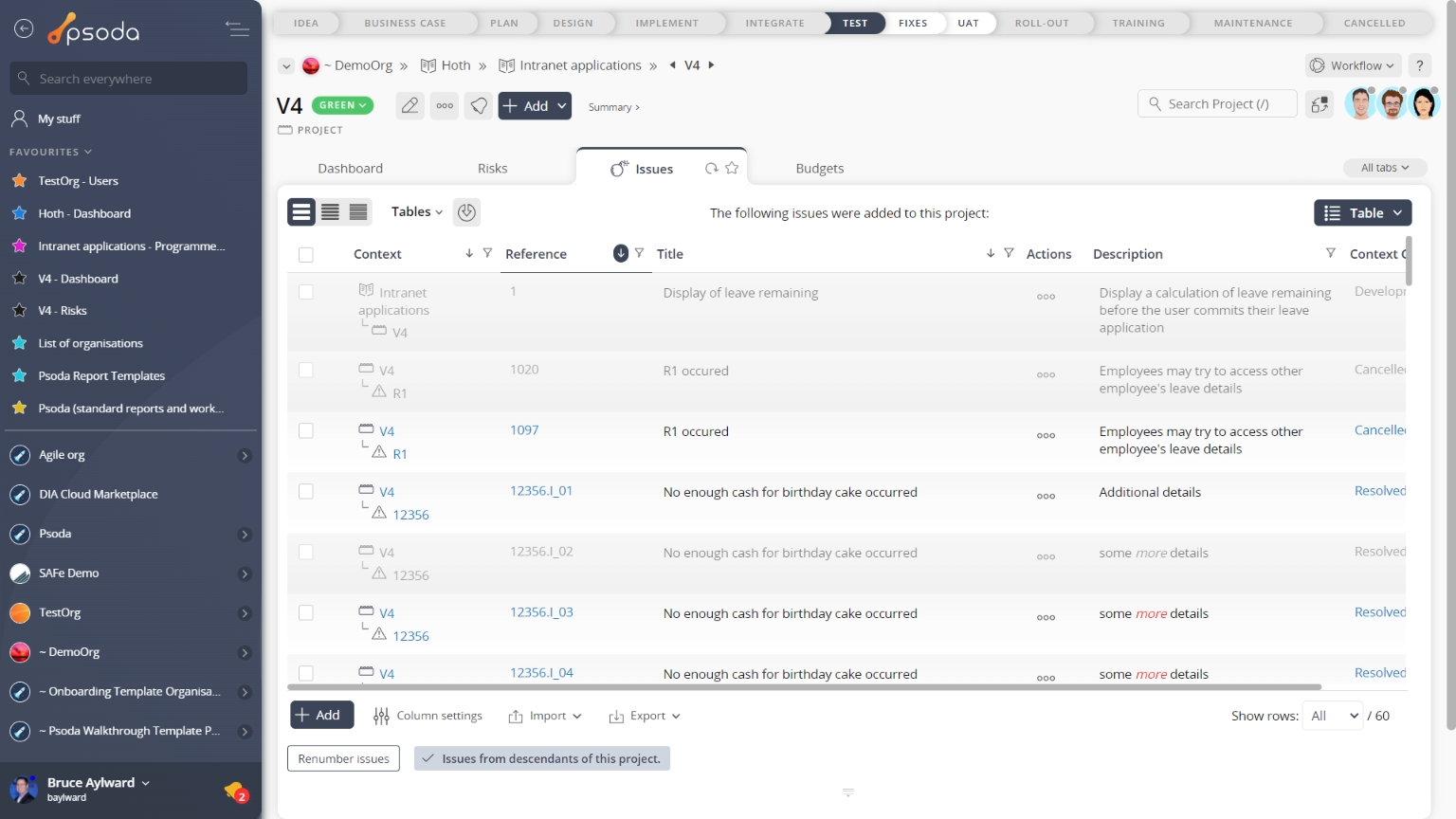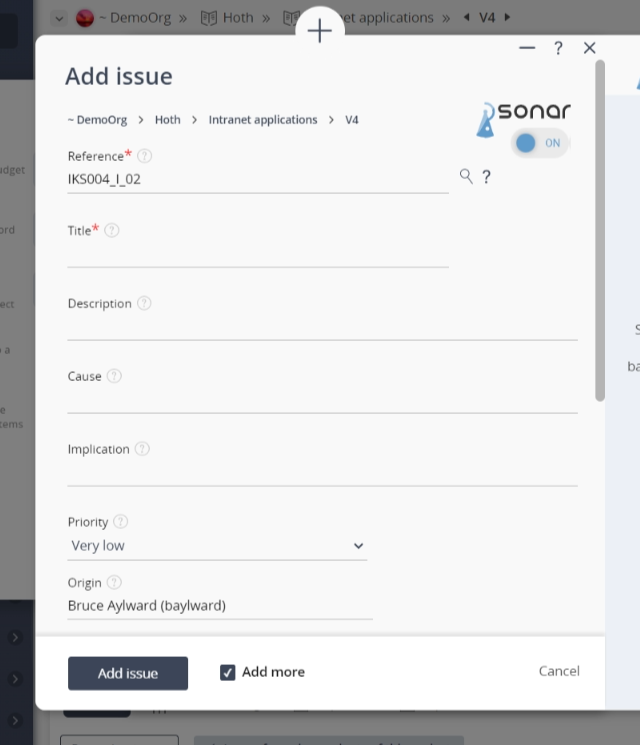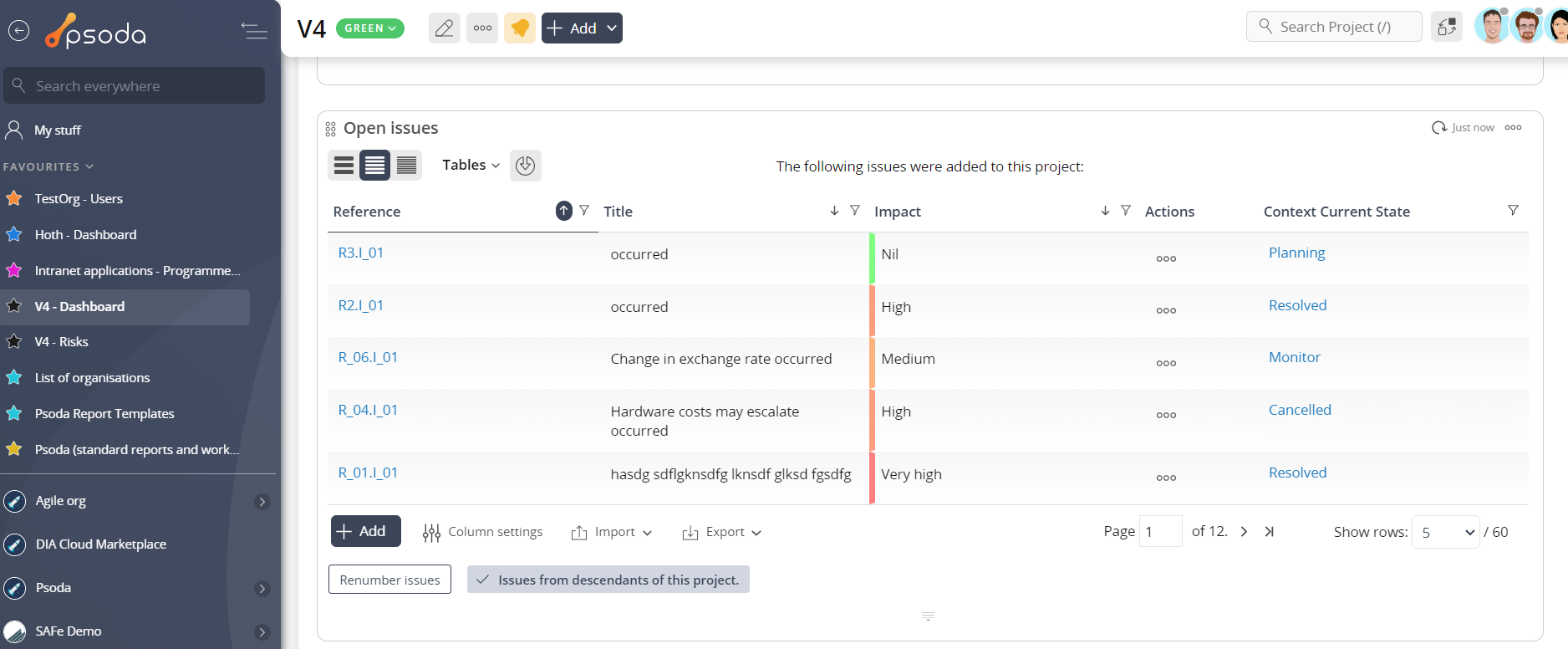This popup form can be accessed via the  add menu in the top header area of the selected asset view page (e.g.
add menu in the top header area of the selected asset view page (e.g.  organisation,
organisation,  programme,
programme,  project,
project,  product,
product,  risk,
risk,  task or
task or  change request), as shown in Figure 1. Alternatively you can access the
change request), as shown in Figure 1. Alternatively you can access the  add popup form via the Issues tabbed view at any of these view pages, shown in Figure 2.
add popup form via the Issues tabbed view at any of these view pages, shown in Figure 2.

*The title and reference fields are mandatory, but all others are optional.
Once you are happy with your entries click the “Add issue” button at the bottom of the form. This will add the new issue with the details that you supplied.
The new issue can be viewed in a number of locations, including the Issues tab at the parent asset’s view page, as shown in Figure 4. Alternatively you can view the new issue from the parent asset’s dashboard in the Open Issues dashlet, as shown in Figure 5.

Figure 1 – Access via add menu
Figure 2 – Access via issues tab
This popup is shown in Figure 3 and is used to add a new issue to the selected asset.
Figure 3 – Add issue form
This form has the following fields:| Parent Asset: | This read-only field shows which organisation, programme, project, risk or change request you are adding the issue to. The name of this field will vary depending on the asset type of the parent. |
|---|---|
| Reference*: | Use this field to enter a unique reference for your issue. If you enter a prefix and end it with one or more zeros, e.g. I_00, then you can click on the |
| Title*: | This mandatory field is used to specify a title for the issue. |
| Description: | You can add a short description of your issue here. |
| Implications: | Use this field to list any implications or advantages gained by implementing this issue. |
| Priority: | Enter a priority for your issue here. This priority can be used when sorting issues in lists. |
| Origin: | Use this field to capture the origin of the change, for example a customer contact. Your name is put in by default. |
| Impact: | Use this drop-down list to select what level of impact this issue has. |
| Treatment plan(s): | Enter the measures that are to be taken if this issue needs a treatment. |
| Treatment date: | Enter the date the treatment plan is due. |
| Owner: | Use this drop-down list to select an owner for this issue request from the drop-down list of |
| Workflow: | Use this drop-down list to select the applicable |
| Plan Progress: | Use this drop-down list to select the plan progress stage that this issue is to be created in. |
| Resolution Date: | Enter the date this issue is to be resolved by using one of the supported date formats or through the use of |
| Add more: | Select this check box if you would like to continue to add more issues to this same asset after the current issue is added. |

Figure 4 – View from issues tab
Figure 5 – View from Open Issues dashlet
Click the “Cancel” button if you no longer want to add a new issue.

